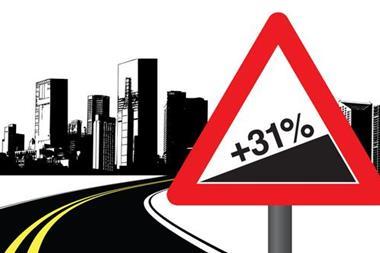Why are claims management companies and personal lines intermediaries showing healthy profits while motor insurers are losing out?
A stable motor insurance industry that delivers sustainable pricing service to customers requires that all elements of the value chain make a profit. That is not to say that all elements of the motor insurance value chain will be making a profit at all points in the underwriting cycle.
Currently, the UK motor market, which comprised around £14bn of gross written premium in 2009, is generating a loss of more than £1.6bn for motor insurers, on top of a loss of around £1bn in 2008. Clearly, as recent issues of Insurance Times make clear, motor insurers are haemorrhaging money. But, what about elsewhere in the value chain?
Many of the recent results announcements have focused on the escalation of bodily injury claims and the under-reserving of prior years claims that has emerged as a result. This has largely focused on the role of the claims management companies, where referral fees continue to increase. One of the largest claims management companies showed on average a 22% growth rate in turnover and a 27% growth rate in profits over the past five years, with its profit margin now close to one-third of its income. So clearly the claims management companies are winning.
It is difficult to see significant short-term change in the bodily injury position for insurers, as the outcome of Lord Jackson’s review and any resulting Ministry of Justice reforms are far from certain. We can expect bodily injury to continue to be a challenge for underwriters.
The other area of the claims value chain that has attracted attention has been credit hire referrals. This is less of a problem for insurers, as the credit crunch and the resultant recession have put pressure on the credit hire companies.
It is perhaps on the premium side of the value chain where the industry has changed most. Who would have foreseen five years ago a position in which a broking intermediary takes a technical price from an insurer for its product and then sells that product below that technical price to the retail customer, immediately generating a loss? That is exactly the position that we are in with motor insurance sold through the aggregator channel. This has led to strategic decisions being made which historically the industry would have been at a loss to understand.
The game today is about building up as big a motor policyholder base as possible by selling stripped-down, low-benefit cover followed by an aggressive up-sell of ancillary products, premium finance and other forms of cross-sale activity where the margins for the distributor are significantly higher. The results of this can be seen in the robustly healthy profits of the major personal lines intermediaries.
What is clear from all of this is that there are elements of the motor value chain, be it in claims or premiums, that are inherently profitable, although motor insurers are losing money.
We are now seeing healthy price rises in most areas of motor insurance, but these need to be sustained if the value chain is to be fixed. Some capacity has left the market as a result of disappointing losses, and it would appear that some insurers have begun to understand where profits are being made in the motor insurance value chain and adapted their strategic direction.
Motor insurers will need to change, be vigilant and speak with one voice. Motor insurance is a compulsory product, and if the value chain breaks down it will be the consumer who will suffer by way of significantly increased pricing. IT
Ian Clark is an insurance partner at Deloitte
Hosted by comedian and actor Tom Allen, 34 Gold, 23 Silver and 22 Bronze awards were handed out across an amazing 34 categories recognising brilliance and innovation right across the breadth of UK general insurance.













































No comments yet